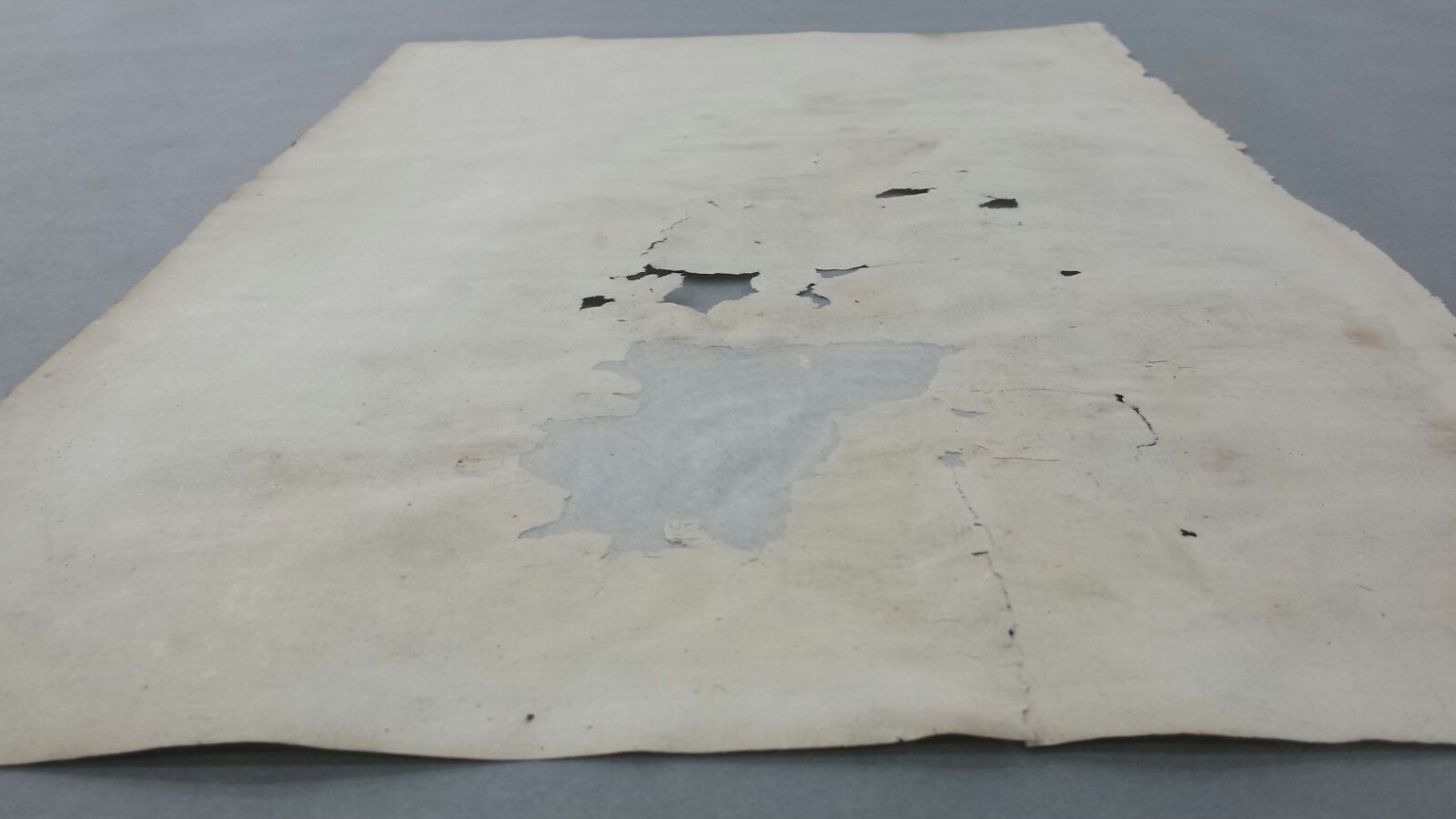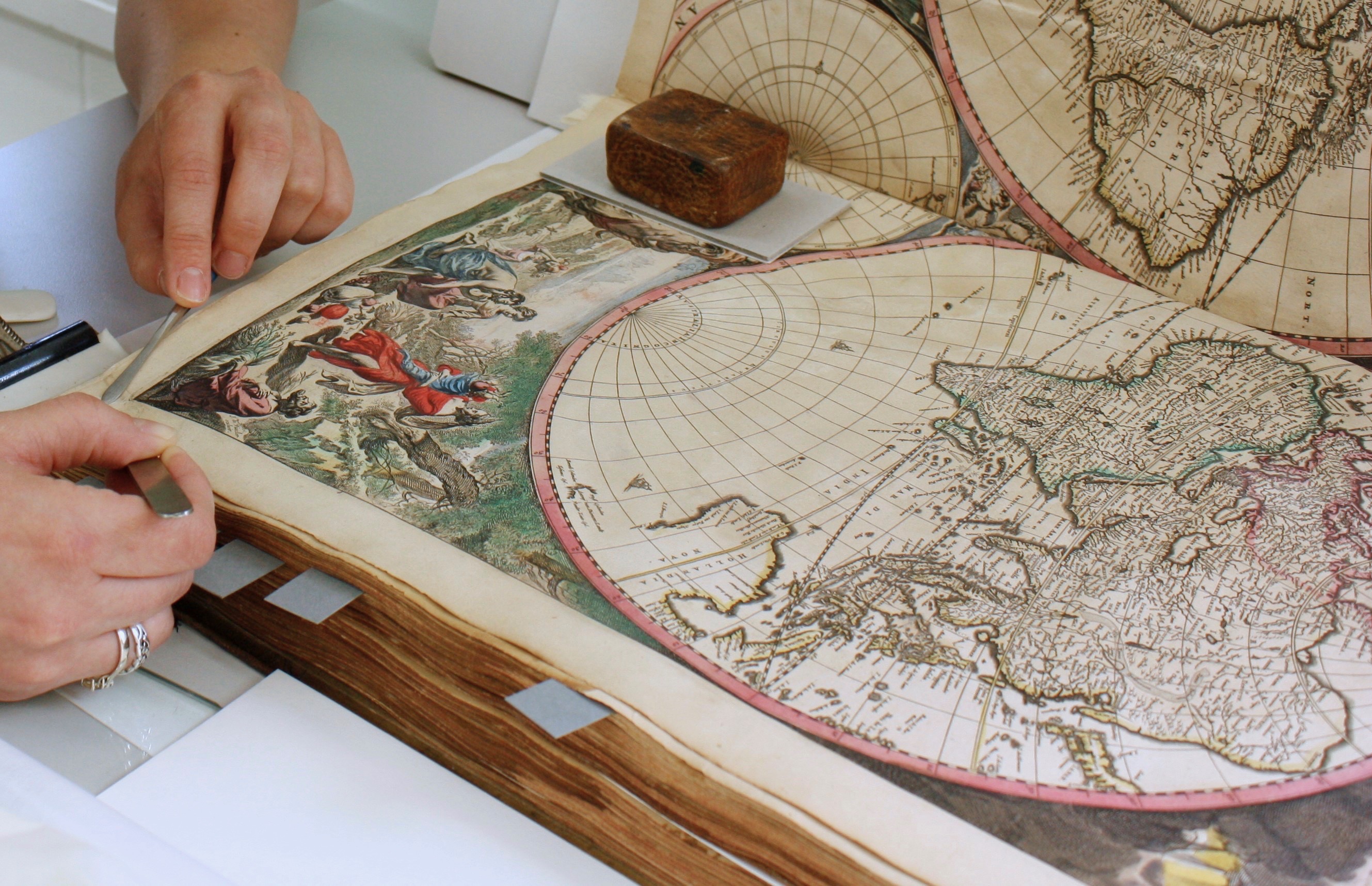
This atlas, dated 1675, previously belonged to the War Office and has undergone previous conservation treatments. Several of those treatments were either failing or not done properly. They needed to be reversed and the atlas retreated. The book block treatments will be covered here; the front board and spine treatments will be discussed in Tabula Atlantis: Part 2 .


The atlas has four original flyleaves, all of which were detached and fragile due to mould damage. Large Japanese paper infills supported areas of loss on the two most damaged leaves. Unfortunately, the infills were causing tension because of the way they were applied and needed to be removed.


The pages were humidified with a 50:50 mixture of deionized water and IMS (industrial methylated spirit). The Japanese paper was then slowly and gently peeled away. All four flyleaves were humidified, their tears realigned, and flattened once all of the infills were removed. They were dried in the following repeating stack [wool felt, blotting paper, Bondina, flyleaf, Bondina, blotting paper, wool felt, wooden board] with heavy weights on top. The blotting paper was changed three times. This process removed some of the staining on the pages as well as flattening them.



I lined the four endpapers with Japanese paper instead of replacing the infills and carrying out numerous paper repairs. The endpapers were humidified again with the deionized water and IMS solution. The two most damaged endpapers were lined with a 16 GSM handmade Japanese paper. The remaining endpapers were in better condition, so a lighter weigh Japanese paper was used (11 GSM, machine- made). They were dried using the same process as when flattening. The blotters were also changed three times.

Portions of the guards keeping the maps in place were detached on 38 of the 54 maps. They were re-adhered using a 10 % (w/v) gelatin B mousse. These could be done approximately four at a time; botting paper and Bondina were placed in the fold of the map, and between maps. Flexible weights were placed as close to the uppermost gutter as possible once four gutters were repaired. Gelatin mousse was also used for tear repairs throughout the atlas. Gelatin mousse was chosen to restrict the amount of moisture needed because of the iron gall ink and fugitive pigments used to produce the maps. Repairs were carried out on the back of the maps whenever possible. The foredges of several maps were particularly brittle, so were reinforced from the back, using wheat starch/methylcellulose 3.5 gsm remiostenable tissue. 47 of the 54 maps needed some form of treatment.

